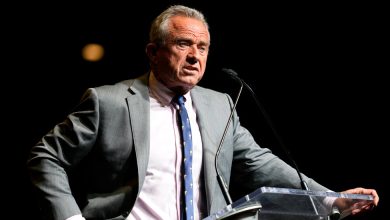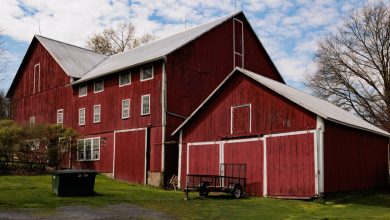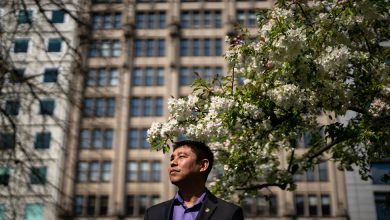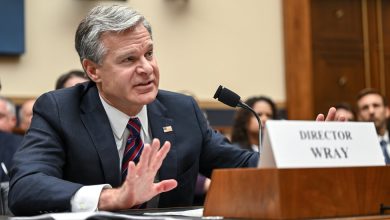Freeway Closed? Just Take the 10 to the 110 to the 5, Angelenos Say.
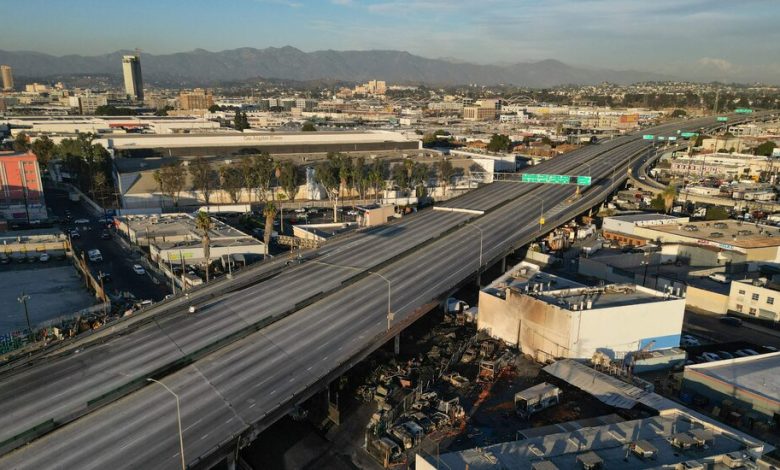
In a city of sprawl, the 10 freeway is a main character, running across the belly of Los Angeles and offering a straight shot from downtown to the Pacific Ocean — with a hazy glimpse of the Hollywood sign along the way.
It also serves as a central artery for commuters making their way to and from the San Gabriel Valley, a constellation of cities with more than 1.5 million residents east of Los Angeles. During rush hour (and sometimes any random hour), it is where drivers sit bumper to bumper, restlessly inching forward.
The recent fire that shut down a nearly two-mile stretch of the freeway created what would seem to be a disaster for a city already swamped with traffic troubles. Gov. Gavin Newsom declared a state of emergency. Mayor Karen Bass urged residents to stay home. And the kicker: it will be weeks before the affected stretch of Interstate 10 can reopen again.
Yet for many residents, the repercussions have felt less catastrophic and more like just another Los Angeles annoyance. The closure creates personal and employment difficulties, for sure. But there is a sense that, if you are accustomed to driving in Los Angeles, you have already honed the skills you need for this moment: mustering some sort of patience, maneuvering on side streets and alternate routes, padding your estimated drive time.
“Driving in L.A. is like a circus for people who are not used to it,” said Rene Jenkins, a hospice nurse who spent nearly 90 minutes in the car — double her usual time — to get to a patient in downtown Los Angeles from her home in Norwalk.
“For new people, to see what’s happening with the 10, I think they’d be like, ‘What the hell? What is going on?’” she said. “Like the way I was when I went to New York for the first time and saw Times Square. But here, for me, it’s just normal.”
In Southern California’s car-centered culture, traffic is a subject of complaint that never gets old, an incessant source of misery. There is a reason residents are always mentioning the routes they drive, blathering on about taking the 10 to the 110 to the 5 to the point of ridicule. It’s because driving directions are a way of life here, and traffic along the way is the great equalizer, antagonizing all.
Spread over 500 square miles, the city of Los Angeles is a vast expanse of diverse neighborhoods designed for car travel. Though the region’s network of bus and rail options have been improved in recent years, it remains hard to entice potential riders to use mass transit when it may mean making more than one transfer, thus not saving any time. High gasoline prices have not seemed to faze most drivers.
Being trapped in your vehicle and constantly, sometimes desperately, trying to find a less torturous route simply comes with the territory.
For Ms. Jenkins, 44, her suddenly longer commute was grueling. But she also described the 10 freeway closure as “nothing major.” After seeing her patient, she stuck to her routine of attending a nearby kickboxing class instead of scurrying home before the traffic got any worse.
“There’s always something happening in L.A,” she said. “We’re just used to it.”
Mayor Bass pleaded with Southern California residents for patience on Monday, and reminded them that they had endured similar emergencies before, including one on a different section of the same freeway. In 1994, the Northridge earthquake caused two bridges on the 10 freeway to collapse; they were rebuilt in less than three months by crews working around the clock.
Governor Newsom said on Tuesday that the 10 would be repaired even faster this time — in three to five weeks — after structural engineers determined that the elevated roadway would not have to be torn down and rebuilt. Instead, crews will reinforce 100 support columns that were damaged by the fire on Saturday morning, which burned in an area beneath the freeway where vehicles and wooden freight pallets were stored. State leaders originally feared that it would take five to six months to reopen the freeway if a rebuild was required, Mr. Newsom said.
Miguel Guzman, a manager at a hydroponics supply store near the burned portion of the freeway, which is just southeast of downtown, likened the closure to what happens on game nights for the Lakers or the Dodgers when roads in the area are jammed. On Monday morning, he said, his usual 20-minute commute from Downey ratcheted up to an hour.
“It was annoying, and not something I like doing, but we’ll find a way out of it for sure — there’s side streets,” said Mr. Guzman, 24. “It will just require us to kind of be a little more prepared.”
It also may help that residents are not far removed from the Covid-19 pandemic closures, when office workers stayed home. Mayor Bass urged employers in the city to allow remote work whenever possible, and some workers said they planned to lean into that as often as they could.
Others who had no daily need to use the affected portion of the 10 freeway said they could perhaps just avoid the area — although nearby highways and streets could be heavily affected, putting a burden on local businesses and residents.
“My friends south of the 10: It was nice knowing you,” Miguel Parreno, an aspiring screenwriter who lives in North Hollywood, posted online.
“It’s the kind of joke you get if you understand L.A.,” Mr. Parreno, 35, said later in an interview. “Like, people in the Valley don’t normally see people on the Westside because it takes so long to get anywhere.”
Los Angeles area residents who endure long commutes often find that they have less tolerance for leaving the house to socialize. Even a couple of miles can feel like too wide a gulf to cross.
“That’s the L.A. mind-set: If it’s inconvenient for me and if it’s going to be difficult to get there, I’d rather just not go,” said Bryant Horowitz, a psychology professor at East Los Angeles College.
Mr. Horowitz, 45, lives in Culver City, and is among those who relied on the burned stretch of freeway to get to work. He scrambled to figure out an alternate route, and managed to find one that adds just 10 minutes to his normal commute. Having grown up in Los Angeles, he knows well the quirks of its highways and side streets and the best times to drive them.
“Navigation,” he said, “is a part of L.A. culture.”
Jill Cowan contributed reporting from Los Angeles.

